For this back-to-school Puzzler I chose two very different scenarios. Let’s apply our analytical skills and see if we can solve them.
First up is a normally aspirated SR-22 with a Continental IO-550-N. This is a test profile flight, with a series of GAMI sweeps followed by a lean-of-peak mag check. Here’s the whole flight, and the cyan trace is fuel flow.
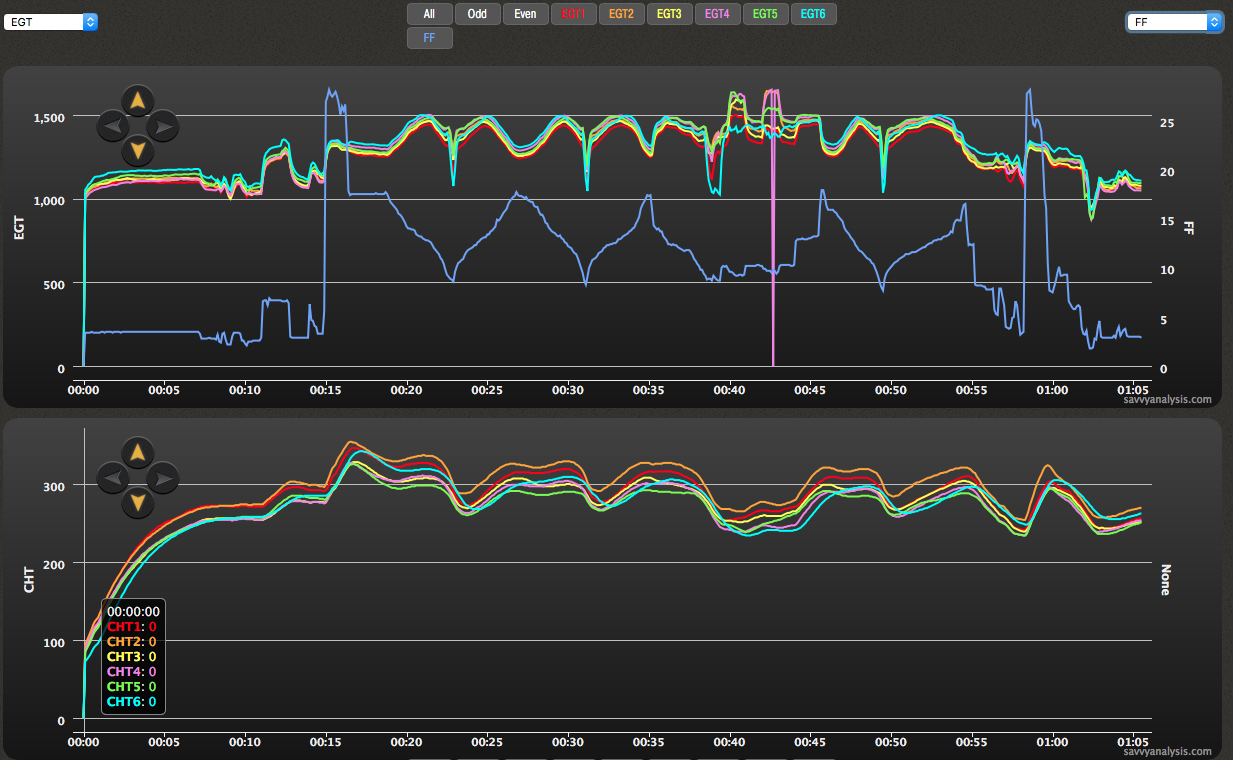
We’ll get to that giant purple spike in a bit, for now let’s start on the left. EGT 6 is high right out of the gate, stays high through the runup mag check, is lowest when FF drops into the 9 GPH range, and is high again after the tests. CHT 6 changes rank and direction of movement along with EGT 6, and that’s a characteristic of a clogged injector. Also notice that as the CHTs change cylinder 6 is always behind the pack. Slower to heat and slower to cool.
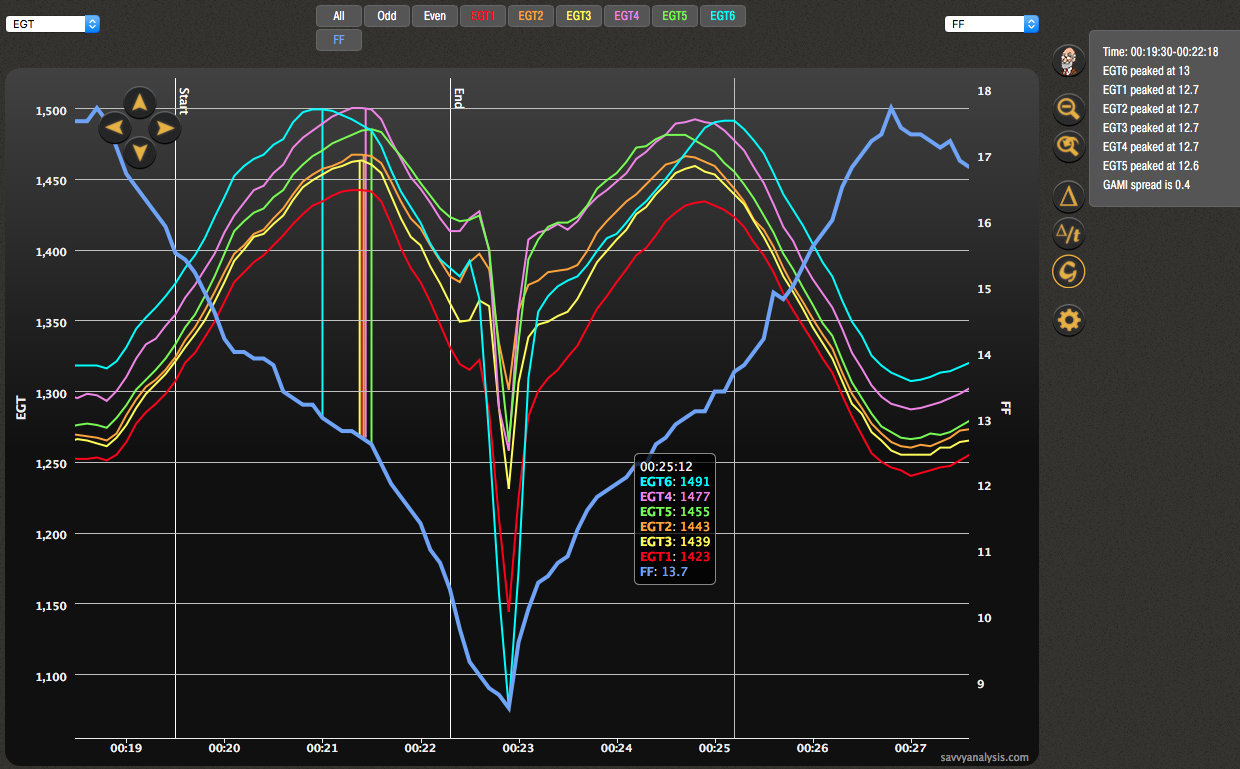
If we zoom in on the GAMI sweeps, we can see that 6 is first to peak when FF leans, and last to peak when FF richens again. Also a characteristic of an injector clog.
Back to the big picture, what else is going on? CHTs 1 and 2 are high right out of the gate and stay high through all the FF and ignition changes – 2 more than 1. EGT 2 is right in the pack so that points more to cooling than to combustion. So far so good. Now let’s zoom in on the mag check.

EGT 4 drops to zero – precisely zero. This is a Garmin G-1000 with a 1 sec sample rate, so this is a short event. It’s doubtful you’d even see it in flight between scanning for traffic or the other duties that keep us busy as pilots. Is it a real event? Did the cylinder stop firing on this mag long enough to clear the exhaust riser of residual gas and give us an accurate measurement of precisely zero? For one second? Doubtful. Maybe even impossible, but we’ll go with doubtful.
Loose connections come in all sorts of flavors, but there’s usually a randomness about them that gives it away. This scenario – an hour of normal logging with one sample of zero – doesn’t act like a loose connection. So while the LOP mag check is designed to identify marginal spark plugs and ignition issues, here it seemed to spotlight a marginal probe.
If it had been a plug, which plug would it have been? Which mag is which? The test profile asks for BOTH-LEFT-BOTH-RIGHT-BOTH, but analysts shouldn’t assume that’s always how it happens. On this Continental, the L mag should fire the bottom plugs of the odds, so we should see higher odds followed by lower odds. It will be easier to see if we hide the big purple spike.
Camel Humps
The first of the camel humps is higher odds, the second hump is lower odds. So if the R mag is second, the purple spike would be the bottom plug of cylinder 4. Notice also that EGT 6 is erratic on both mags – again confirming our injector theory – and doesn’t rise from one mag to the other. Odds fall from L to R, and 2 rises from L to R. 6 and 4 are each in their parallel universe.
So on this test profile, we have recommendations for cleaning injector 6, checking the cooling around cylinder 2, and, despite the giant spike that grabbed our attention at the outset, no recommendation for cylinder 4, other than its EGT being another candidate for PROB-ation.
Rock, Scissors, Paper
Let’s finish with one that’s really not even fair, but it’s too good not to show you. This is a Cessna 182 with a Lycoming IO-540-AB. Pilot aborted the takeoff when the engine surged after power was applied. Here’s the flight data.
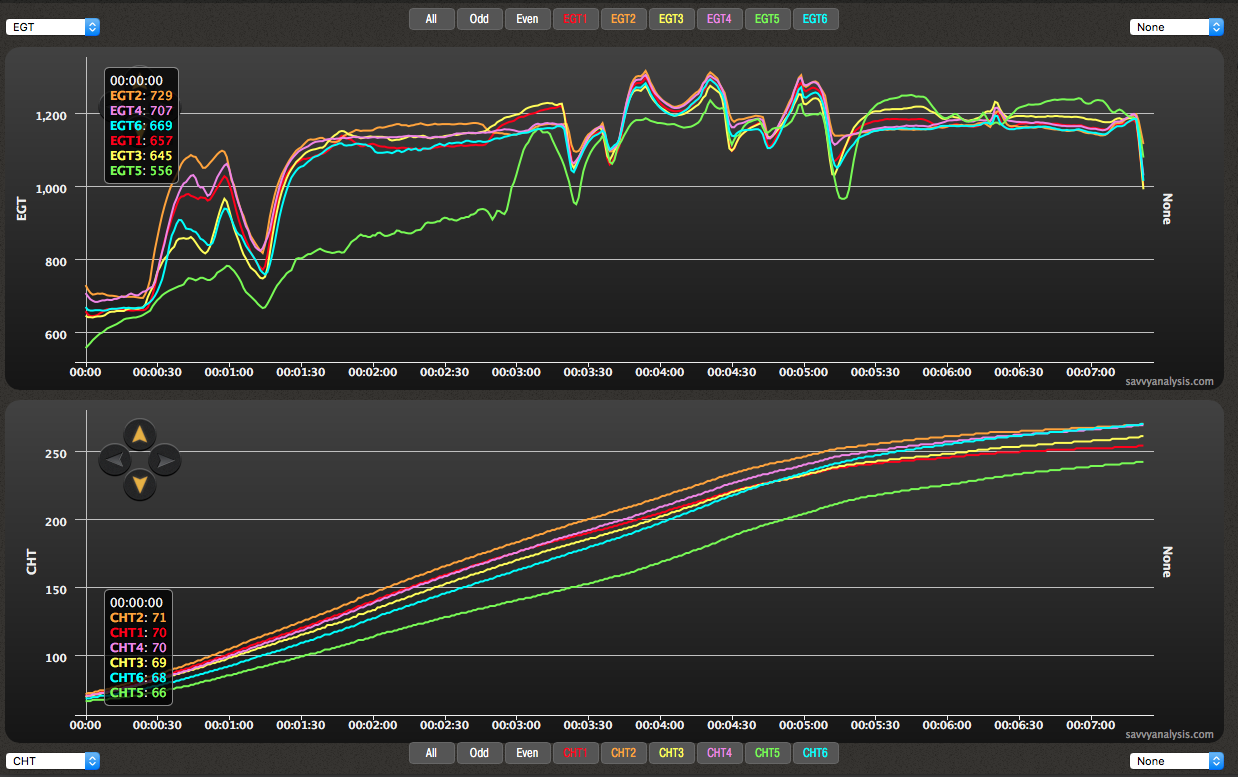
At first glance it’s tempting to say that all’s well except for whatever’s going on with cylinder 5. Here’s the flight data with the cyan trace as FF.
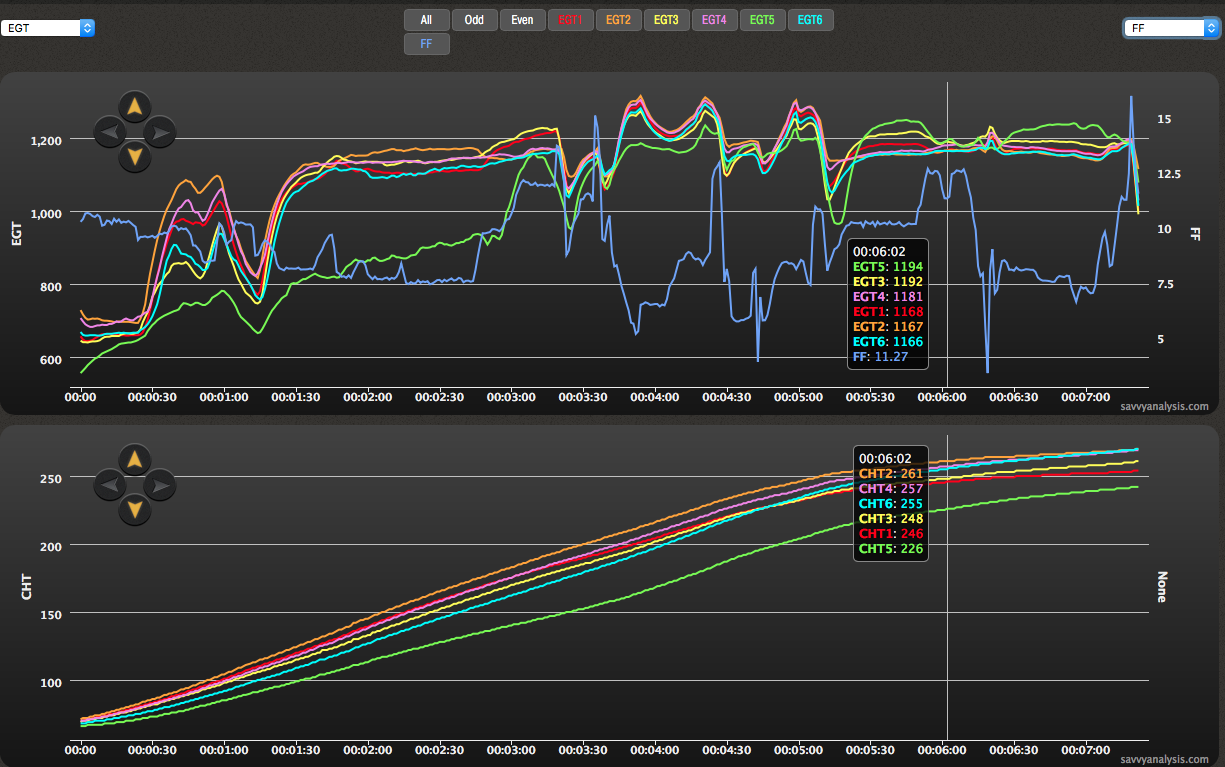
Now it’s a different story. Now 5 just looks like it’s reacting to the haphazard fuel flow it’s receiving. When the shop saw the FF data, they decided to examine the fuel servo. They removed the air intake for the servo, and found the fuel-soaked wrapper of an air filter wedged inside.
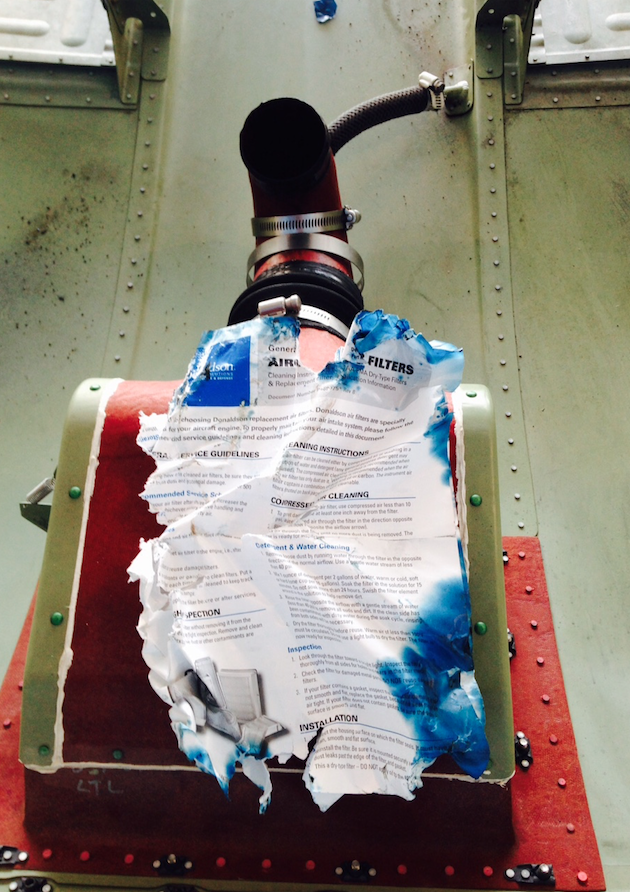
I warned you it wasn’t fair. Apparently this paper had been there for a while, and picked that particular takeoff roll to get between the gas tank and the spark plugs. The erratic FF data was the clue, and it saved the pilot the cost of a fuel servo overhaul, and probably saved more than that if this had happened just a few moments later.